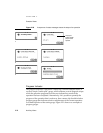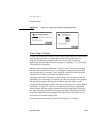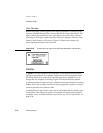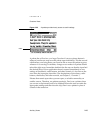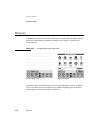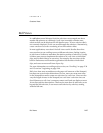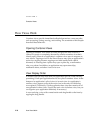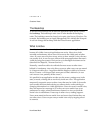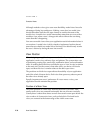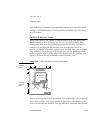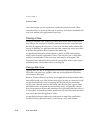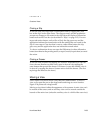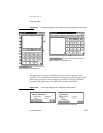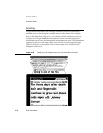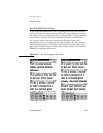
CHAPTER 2
Container Views
2-30 How Views Work
Although modeless views give users more flexibility, modal views have the
advantage of being less ambiguous. Nothing a user does in a modal view
should take effect until the user taps a button to confirm the state of the
modal view. A modal view avoids intermediate states that can occur with a
modeless view, where a user’s changes take effect without the user being
aware that this is happening.
You can use modal views when your application needs information before it
can continue. A modal view is fairly simple to implement, but that doesn’t
mean that you should use modal views too freely. You should rarely restrict
the user’s actions by forcing the user into a mode.
View Position 2
When designing an application, you must decide where to position the
application’s main view, ordinary slips, and palettes. The system takes care
of positioning routing slips, status slips, notification alerts, and confirmation
alerts. In making these decisions consider the type of view, its size in relation
to the main view (or the screen), what other views you know will also be
open, and how the view’s content relates to the other open views.
The positions at which views open affects the usability of your application
and of the whole Newton device. Each view that opens may obscure part of
the other views already open.
Equally important are users’ preferences. If a user moves a view, your
application should maintain that position.
Position of a Main View 2
The initial position of a main view that fills the screen is obvious. Most
smaller main views are centered horizontally but are off-center vertically.
Usually there is about three times as much uncovered screen space below the
view as above it. Some main views, such as the built-in Find and Assist
views, are centered at the bottom edge of the visible screen area.



